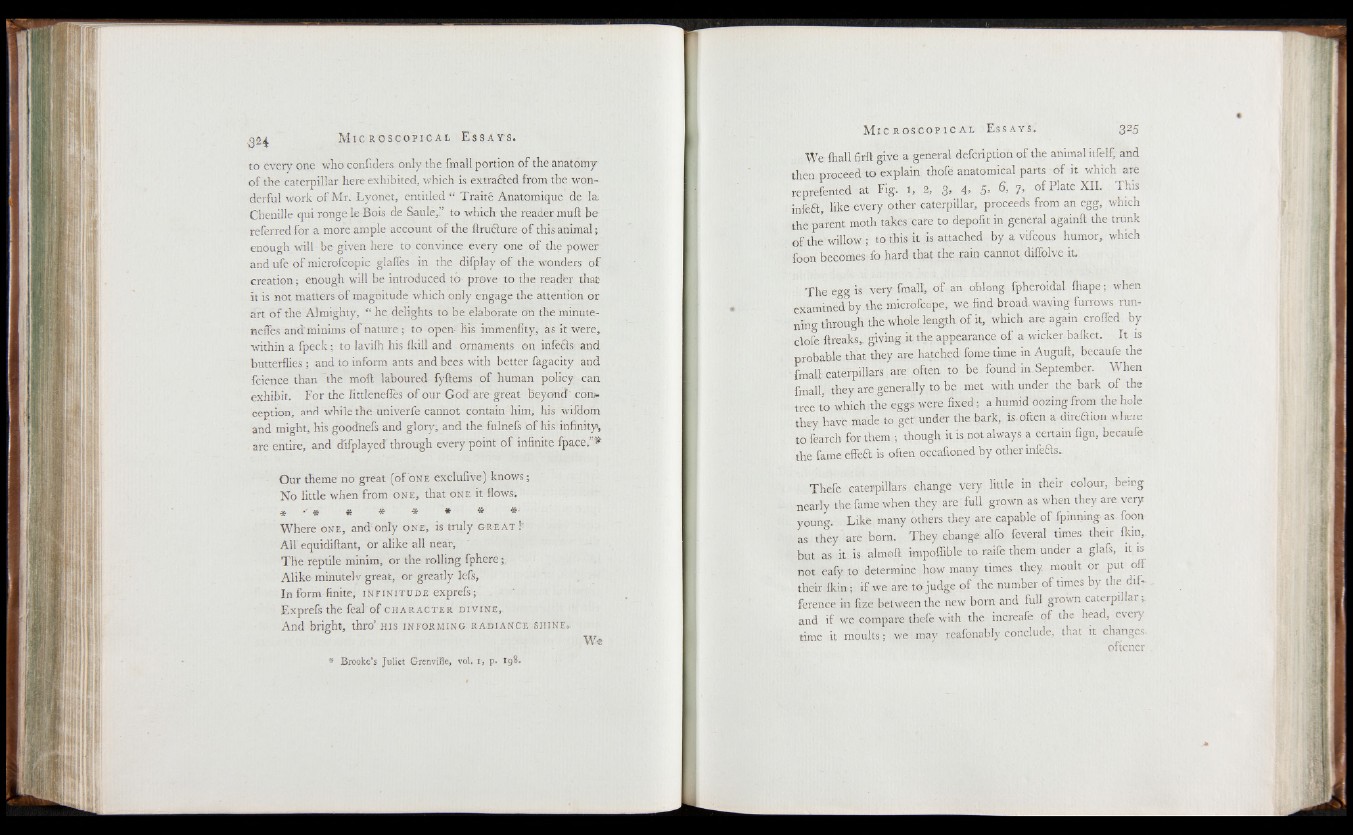
to every one who confiders only the fmall portion of the anatomy
o f the caterpillar here exhibited, which is extraéled from the wonderful
work o f Mr. Lyonet, entitled “ Traité Anatomique de la.
Chenille qui ronge le Bois de Saule/ to which the reader muft be
referred for a more ample account o f the ftruHure o f this animal ;
enough will be given here to convince every one o f the power
and ufe of microfcopic glafles in the difplay o f the wonders o f
creation ; enough will be introduced to prove to the reader that
it is not matters o f magnitude which only engage the attention or
art of the Almighty, “ he delights to be elaborate on the minute-
neffes and'minims of nature ; to open- his immenlity, as it were,
within a fpeck ; to lavifh his fkill and ornaments on infects and
butterflies ; and to inform ants and bees with better fagacity and
fcience than the moll laboured fyftems of human policy can
exhibit. For the littléneflès of our G od are great beyond' conception,
and while the univerfe cannot contain him, his wifdom
and might, his goodnefs and glory, and the fulnefs o f his infinity,
are entire, and difplayed through every point o f infinite fpace. *
Our theme no great (of one exclufive) knows ;
No little when from one, that one it flows;
# * * * *
Where one, and only one, is truly grea t l
All equidiftant, or alike all near,
The reptile minim, or the rolling fphere
Alike minutely great, or greatly lefs,
In form finite, infinitude exprefs;
Exprefs the feal o f char a c ter d ivine,.
And bright, thro’ his informing; radiance shine-
We
* Brooke’s Juliet Grenville, vol. I, p. 198.
We lhall firft give a general defcription of the animal itfelf, and
then proceed to explain thofe anatomical parts of it which are
reprefented at Fig. 1, 2, 3, 4, 5, 6, 7, of Plate XII. This
infeft, like every other caterpillar, proceeds from an egg, which
the parent moth takes cafe to depofit in general againft the trunk
o f the willow ; to this it is attached by a vifcous humor, which
foon becomes fo hard that the rain cannot dilfolve it.
The egg is very {mail, o f an oblong fpheroidal. fhape; when
examined by .the microfcope, we find broad, waving furrows running
through the whole length of it, which are again crofled by
clofe ftreaks,, giving it the appearance o f a wicker bafltet. It is
probahle that they are hatched fometime in Auguft, becaufe the
fmall caterpillars are often to be found in September. When
fmall, they are generally to be met with under the bark o f the
tree to which the eggs were fixed; a humid oozing from the hole
they have made to get under the bark, is. often a direftion where
to fearch for them ; though it is not always a certain fign, becaufe
the fame effect is often occafioned by other infefts.
Thefe caterpillars ehange very little in their colour, being
nearly the fame when they are full grown as when they are very
young. Like many others they are capable of fpmning as foon
as they are born. They change alfo feveral times- their {kin,
but as it is almoft impoffible to raife them under a glafs, it is
not eafy to determine how many times they, moult or put off
their {kin; if we are to judge of the number of times by the difference
in fize between the new bom and full grown caterpillar -
and if we compare thefe with the increafe of the head, every
time it moults; we may reafonably conclude, that it changes,
oftener